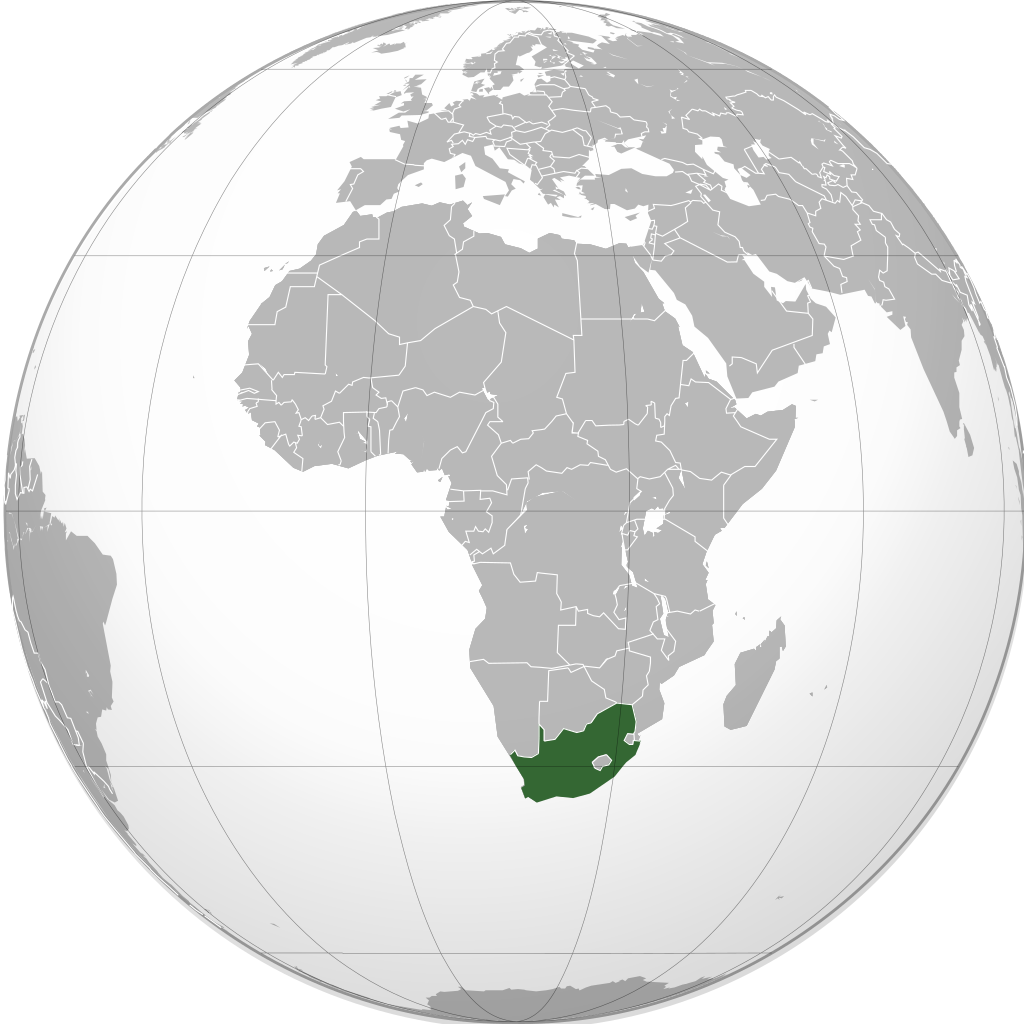More languages
More actions
No edit summary Tag: Visual edit |
m (Added flag.) Tag: Visual edit |
||
| Line 1: | Line 1: | ||
{{Infobox country|name=Republic of South Africa|image_map=South Africa.png|map_width=290|largest_city=Johannesburg|official_languages=Afrikaans<br>English<br>Ndebele<br>Sepedi<br>Sesotho<br>Setswana<br>Swazi<br>Tshivenda<br>Xhosa<br>Xitsonga<br>Zulu|mode_of_production=[[Capitalism]]|area_km2=1,221,037|population_estimate=60,142,978|population_estimate_year=2021}} | {{Infobox country|name=Republic of South Africa|image_flag=Flag of South Africa.png|image_map=South Africa.png|map_width=290|largest_city=Johannesburg|official_languages=Afrikaans<br>English<br>Ndebele<br>Sepedi<br>Sesotho<br>Setswana<br>Swazi<br>Tshivenda<br>Xhosa<br>Xitsonga<br>Zulu|mode_of_production=[[Capitalism]]|area_km2=1,221,037|population_estimate=60,142,978|population_estimate_year=2021}} | ||
'''South Africa''', officially the '''Republic of South Africa''', is the southernmost country in [[Africa]]. | '''South Africa''', officially the '''Republic of South Africa''', is the southernmost country in [[Africa]]. | ||
Revision as of 16:11, 1 August 2022
| Republic of South Africa | |
|---|---|
|
Flag | |
 | |
| Largest city | Johannesburg |
| Official languages | Afrikaans English Ndebele Sepedi Sesotho Setswana Swazi Tshivenda Xhosa Xitsonga Zulu |
| Dominant mode of production | Capitalism |
| Area | |
• Total | 1,221,037 km² |
| Population | |
• 2021 estimate | 60,142,978 |
South Africa, officially the Republic of South Africa, is the southernmost country in Africa.
History
At the 1885 Berlin Conference, European powers divided and colonized Africa. The South African government supported Rhodesia's racist government and invaded Angola, Mozambique, and Namibia.[1]
Until 1994, South Africa was segregated under the Apartheid system. Many Black Africans were confined to puppet states called Bantustans that were nominally independent. Bantustans made up 13% of the country's area and were on poor land far from urban areas. Africans who left the Bantustans without identification documents could be arrested and deported to the nearest Bantustan. In 1960, white supremacist forces killed people protesting against this system in the Sharpeville massacre.[2]
Racial inequality
White settlers own over 70% of its farmland despite only being 8% of the population.[3] The average income for settlers is five times as high as for Black Africans.[2]
References
- ↑ "South Africa and the continental struggle for socialism" (2014-01-26). Archived from the original on 2019-07-14. Retrieved 2022-07-02.
- ↑ 2.0 2.1 Lewis Barnes (2018-05-05). "South Africa: Major developments in the long struggle for land reform" Liberation News. Archived from the original on 2019-07-14. Retrieved 2022-07-02.
- ↑ Francis Njubi Nesbitt (2018-08-27). "In South Africa, Trump Embraces a Global Neo-Nazi Myth" MintPress News. Retrieved 2022-07-02.

